VATI RN COMPREHENSIVE PREDICTOR FOCUSED REVIEW
Document Content and Description Below
VATI RN COMPREHENSIVE PREDICTOR FOCUSED REVIEW ❖ Management of Care – (9) ➢ Advance Directives – (1) ▪ Legal Responsibilities: Purpose of a Living Will (RM FUND 9.0 Chp 4) • A living w... ill is a legal document that expresses the client’s wishes regarding medical treatment in the event the client becomes incapacitated and is facing end- of-life issues. Most state laws include provisions that protect health care providers who follow a living will from liability. ➢ Assignment, Delegation and Supervision – (2) ▪ Delegation and Supervision: Delegating Tasks to an Assistive Personnel (RM FUND 9.0 Chp 6) • Examples of tasks nurses may delegate to Aps (provided the facility’s policy and state’s practice guidelines permit) ◆ Activities of daily living (ADLs) – bathing, grooming, dressing, toileting, ambulating, feeding (without swallowing precautions), positioning ◆ Routine tasks – bed making, specimen collection, intake and output, vital signs (for stable clients) ▪ Managing Client Care: Delegation Strategy for Effective Task Management (RM Leadership 7.0 Chp 1) • Consideration for selection of an appropriate delegate include the following: education, training, and experience; knowledge and skill to perform the task; level of critical thinking required to complete the task; ability to communicate with others as it pertains to the task; demonstrated competence; the delegatee’s culture; agency policies and procedures and licensing legislation (state nurse practice acts) ➢ Case Management – (1) ▪ Cardiovascular Disorders: Tetralogy of Fallot (RM NCC RN 10.0 Chp 20) • Tetralogy of Fallot – four defects that result in mixed blood flow: Pulmonary stenosis, ventricular septal defect, overriding aorta, right ventricular hypertrophy ◆ Cyanosis at birth: progressive cyanosis over the first year of life. Systolic murmur. Episodes of acute cyanosis and hypoxia (blue or “Tet” spells) • Surgical procedures – shunt placement until able to undergo primary repair; complete repair within the first year of life ➢ Collaboration with Interdisciplinary Team – (1) ▪ Communicable Diseases, Disasters, and Bioterrorism: CDC Reportable Diagnoses (RM CH RN 7.0 Chp 6) • Anthrax. Botulism. Cholera. Congenital rubella syndrome (CRS). Diphtheria. Giardiasis. Gonorrhea. Hepatitis A, B, C. HIV infection. Influenza-associated pediatric mortality. Legionellosis/Legionnaires’ disease. Lyme disease. Malaria. Meningococcal disease. Mumps. Pertussis (whooping cough). Poliomyelitis, paralytic. Poliovirus infection, nonparalytic. Rabies (human or animal). Rubella (German measles). Salmonellosis. Severe acute respiratory syndrome-associated coronavirus disease (SARS-CoV). Shigellosis. Smallpox. Syphilis. Tetanus/C. tetani. Toxic shock syndrome (TSS) (other than Streptococcal). Tuberculosis (TB). Typhoid fever. Vancomycin-intermediate and vancomycin-resistant. Staphylococcus aureus (VISA/VRSA) ➢ Continuity of Care – (1) ▪ Information Technology: Change-of-Shift Report (RM FUND 9.0 Chp 5) • Nurses give this report at the conclusion of each shift to the nurse assuming responsibility for the clients. ◆ Formats include face to face, audiotaping, or presentation during walking rounds in each client’s room (unless the client has a roommate or visitors are present) ◆ An effective report should: include significant objective information about the client’s health problems; proceed in a logical sequence; include no gossip or personal opinion; relate recent changes in medications, treatments, procedures, and the discharge plan ➢ Establishing Priorities – (1) ▪ Managing Client Care: Determining Priority Care for a Group of Clients (RM Leadership 7.0 Chp 1) • Prioritize systemic before local (“life before limb”) ◆ Prioritizing interventions for a client in shock over interventions for a client who has a localized limb injury • Prioritize acute (less opportunity for physical adaptation) before chronic (greater opportunity for physical adaptation) ◆ Prioritizing the care of a client who has a new injury/illness (e.g. mental confusion, chest pain) or an acute exacerbation of a previous illness over the care of a client who has a long-term chronic illness • Prioritize actual problems before potential future problems ◆ Prioritizing administration of medication to a client experiencing of medication to a client experiencing acute pain over ambulation of a client at risk for thrombophlebitis • Listen carefully to clients and don’t assume ◆ Asking a client who has a new diagnosis of diabetes mellitus what he feels is most important to learn about disease management • Recognize and respond to trends vs. transient findings ◆ Recognizing a gradual deterioration in a client’s level of consciousness and/or Glasgow Coma Scale score • Recognize indications of medical emergencies and complications vs. expected findings ◆ Recognizing indications of increasing intracranial pressure in a client who has a new diagnosis of a stroke vs. the findings expected following a stroke • Apply clinical knowledge to procedural standards to determine the priority action ◆ Recognizing that the timing of administration of antidiabetic and antimicrobial medications is more important than administration of some …………………………………….CONTINUED……………………………………………… [Show More]
Last updated: 1 year ago
Preview 1 out of 17 pages
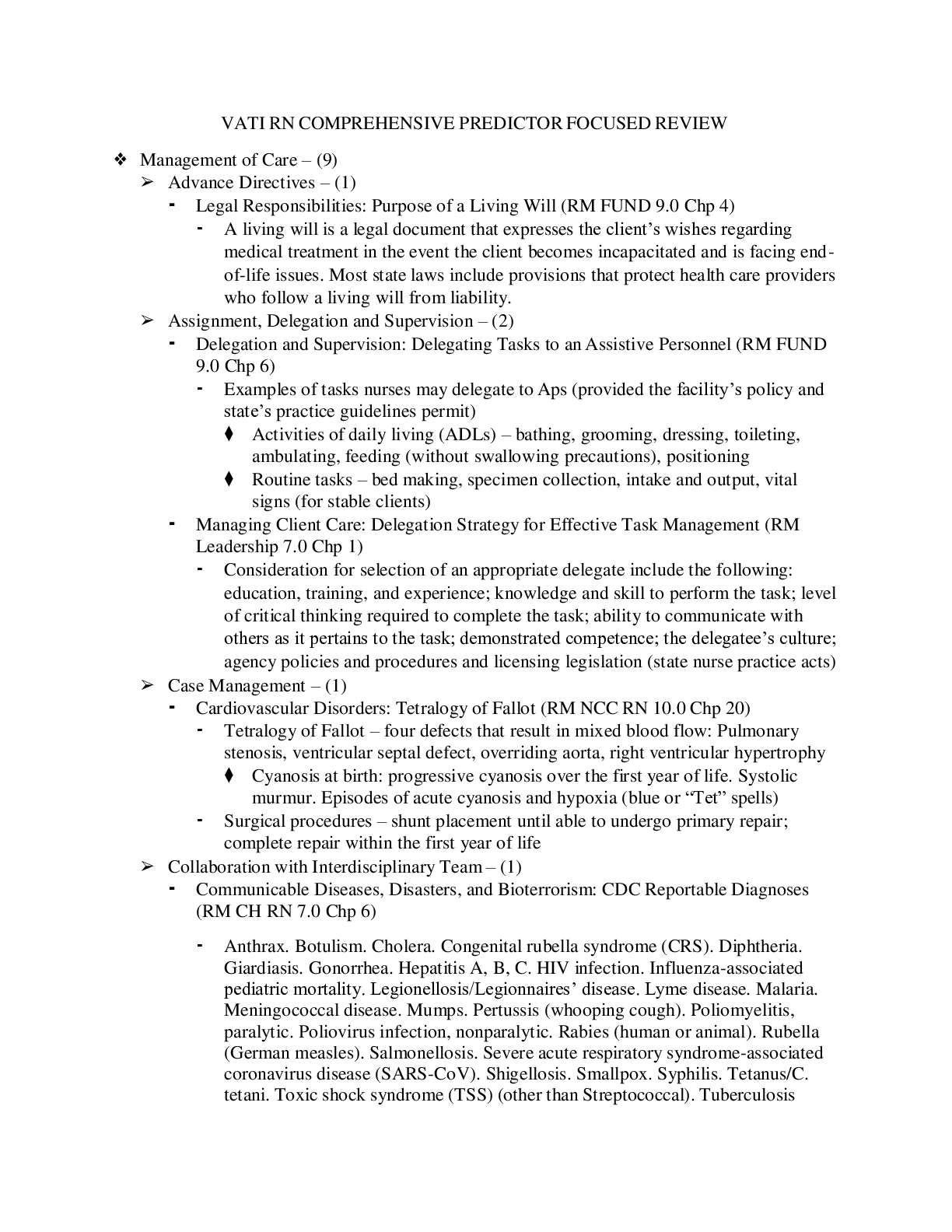
Reviews( 0 )
Document information
Connected school, study & course
About the document
Uploaded On
Mar 23, 2021
Number of pages
17
Written in
Additional information
This document has been written for:
Uploaded
Mar 23, 2021
Downloads
0
Views
42

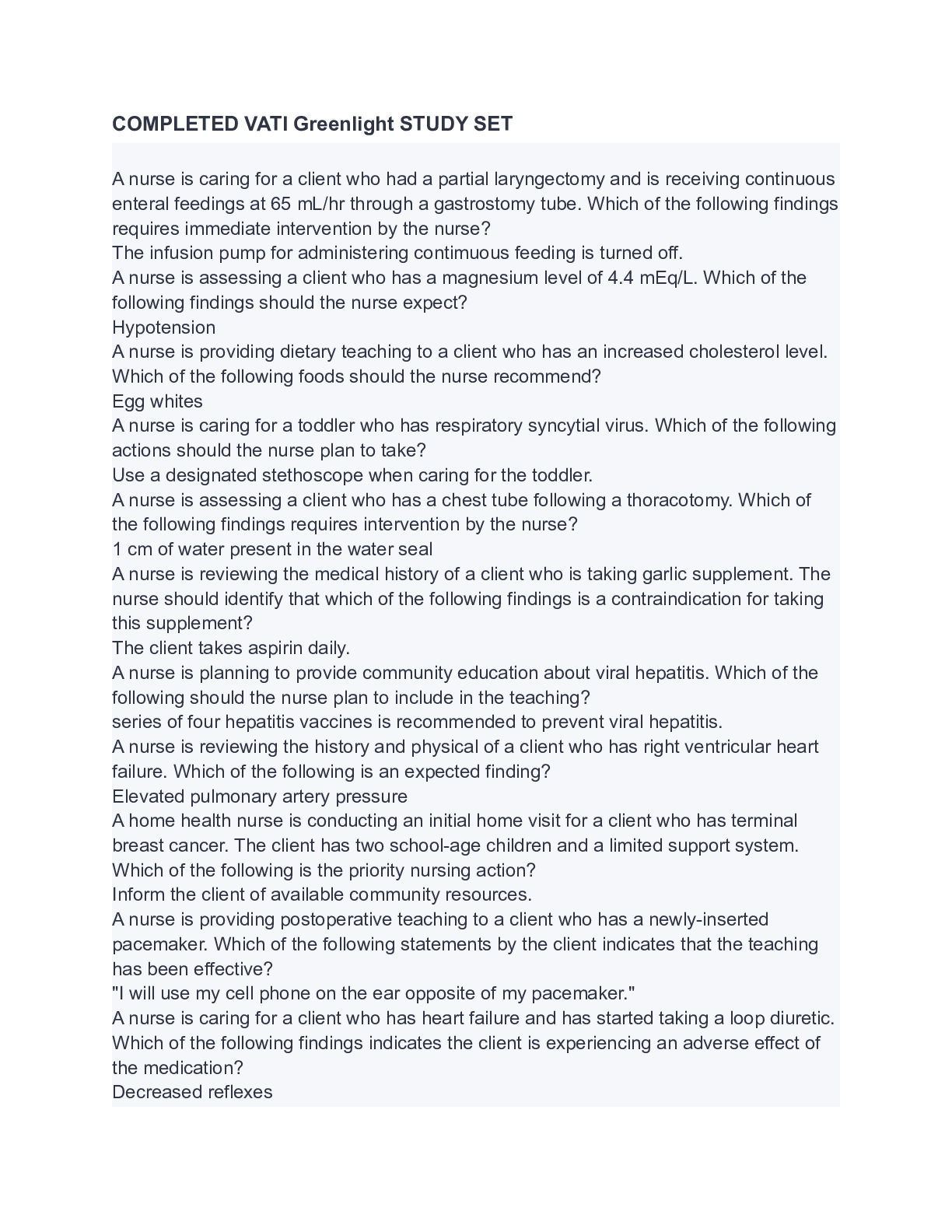
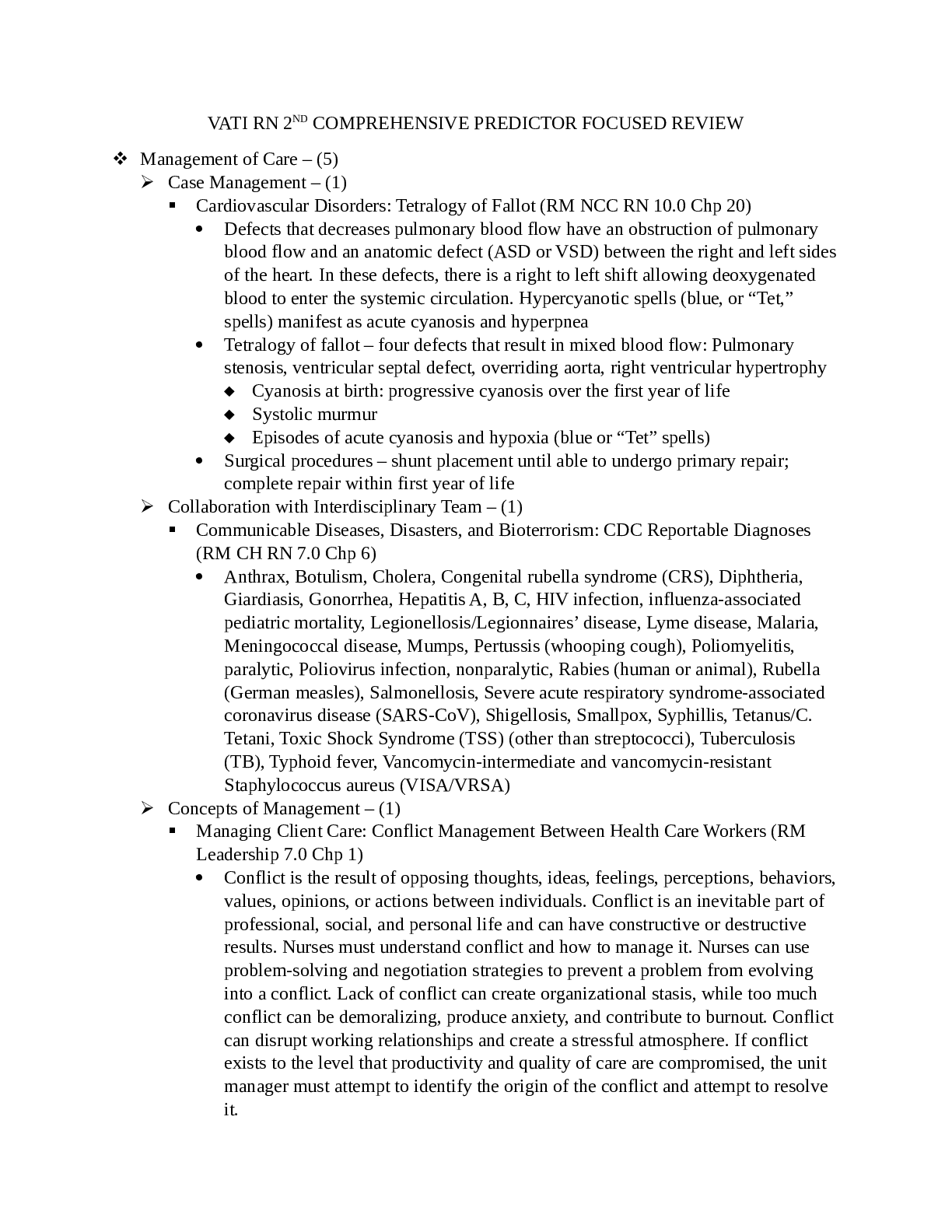
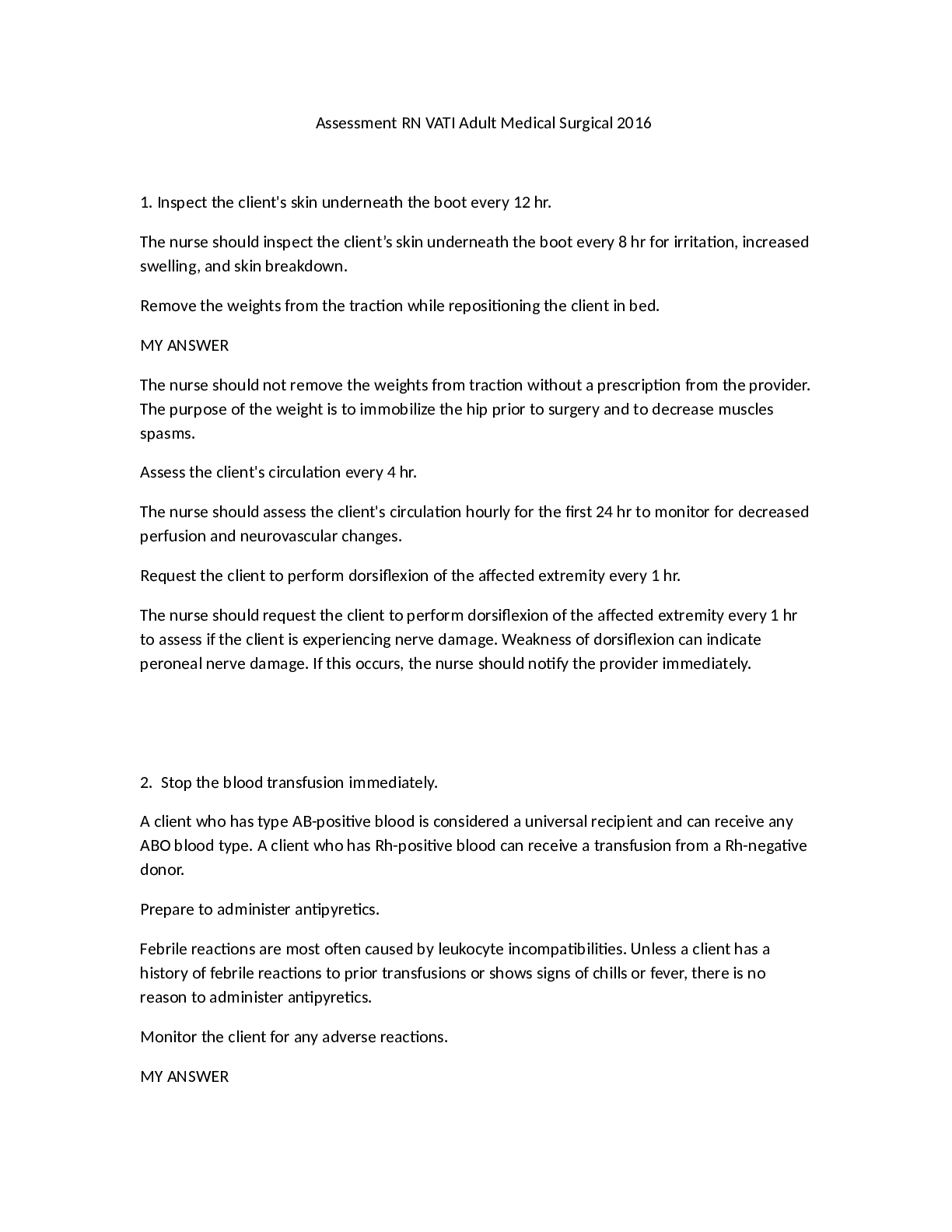




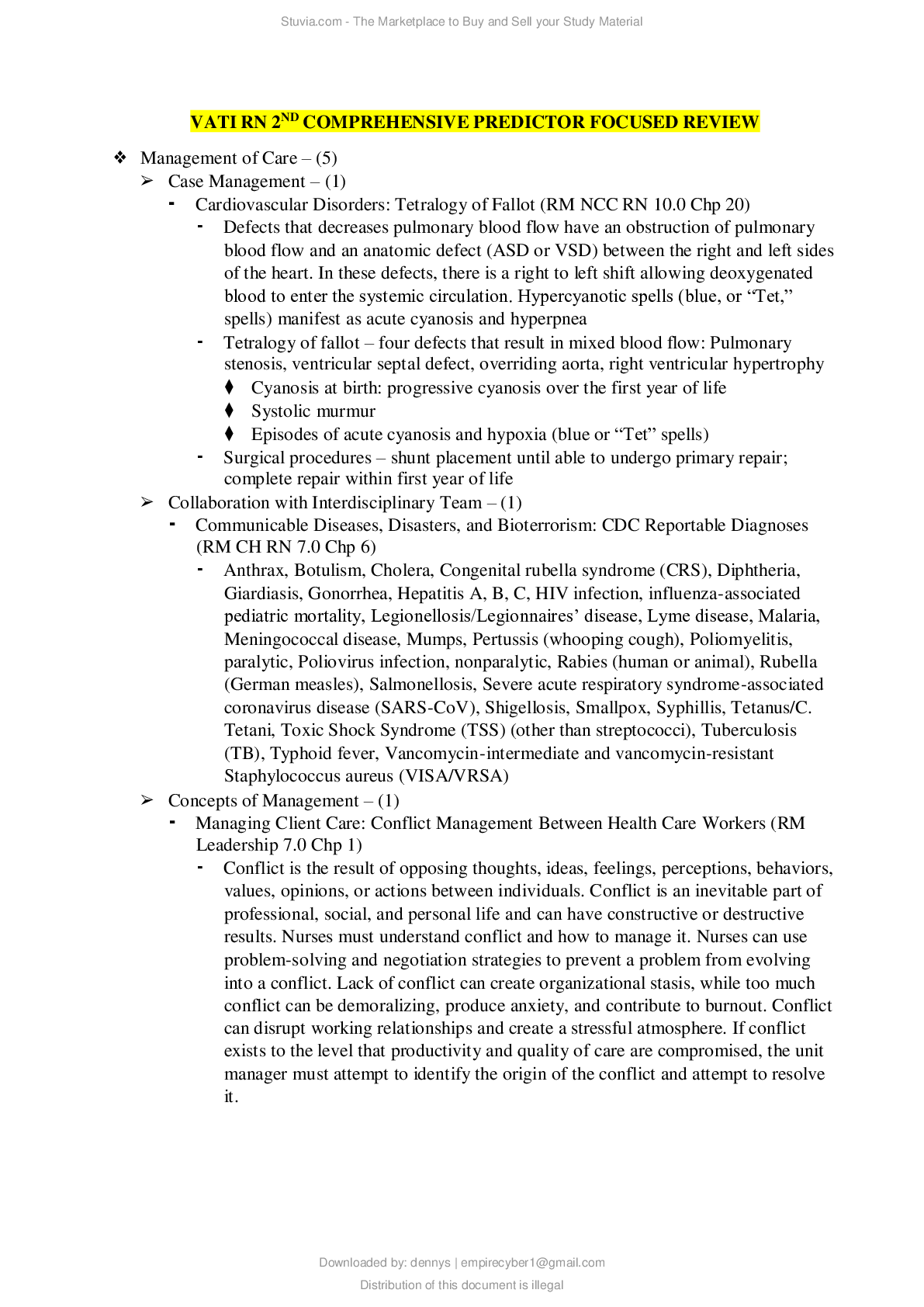
_removed.png)

